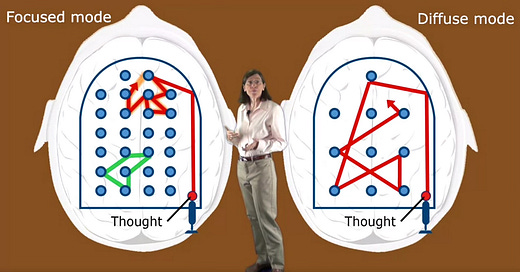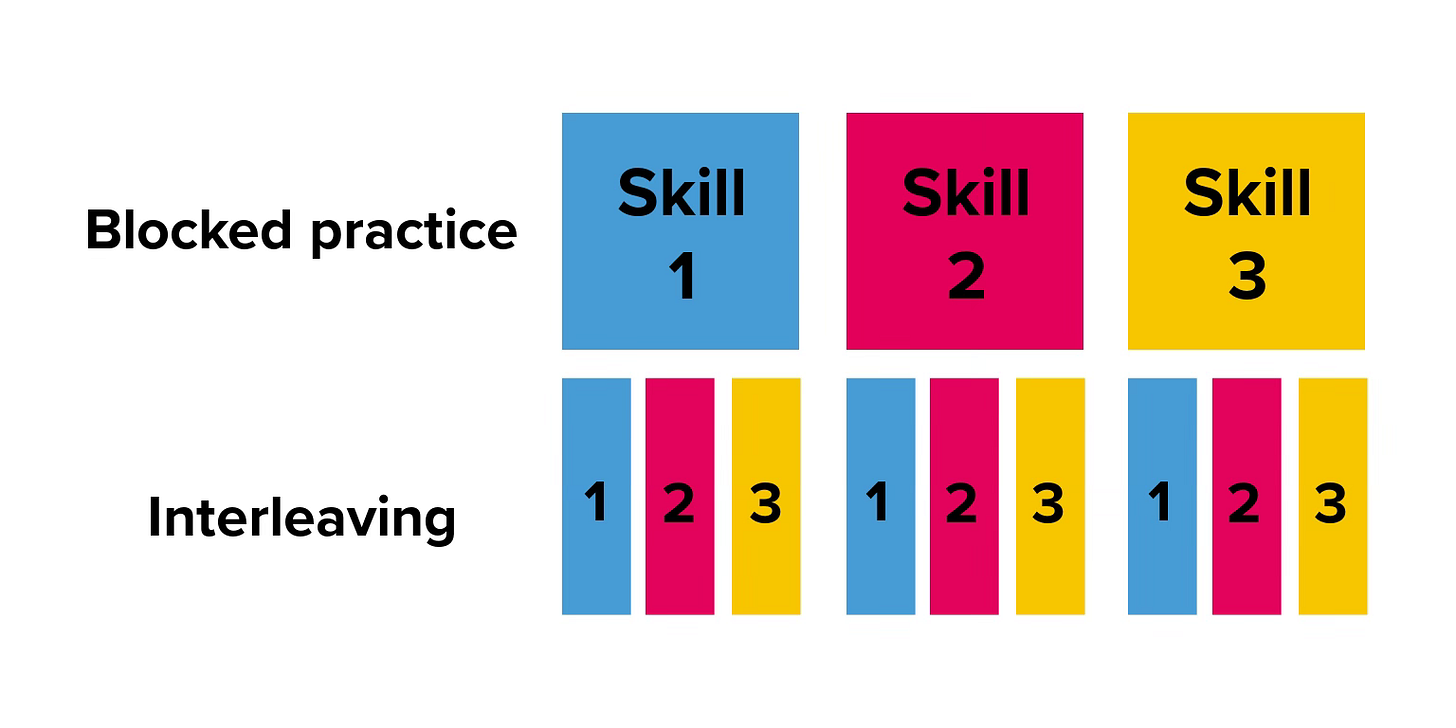Barbara Oakley is one of my favorite education heroes whose book “Learning How to Learn” has changed the way I think about learning. I highly recommend getting that book.
In this post, I’m summarizing her ideas after watching this video and adding a bit of my thoughts on it.
Neural modes: Focused mode and Diffused mode
We have two different neural modes when we are accessing information and perceiving the world around us.
When we are learning something for the first time, we are in the Focused mode. Activating “task-positive” networks. But when the learning gets challenging (frustrating) and we can’t really make sense of what’s happening, we tend to switch off our attention. That activates the “diffused mode” networks.
However, even when we are not actively thinking about the things we are trying to learn, the “diffused mode” is still working in the background. After a while when you resume the learning, suddenly the information makes sense.
Learning often involves going back and forth between these two neural modes: Focused mode and Diffused mode. The catch is, we can only be in one mode at a certain time.
The takeaway: When you are learning something new, you want to create a well-practiced neural pattern that you can easily draw to mind when you need it.
Chaos to Order:
This happens in almost anything new that we want to learn.
Realize that
the initial stages of learning won’t make sense right away
the moment of challenge (or frustration) is crucial for learning
learning happens in small chunks and we gradually develop automated neural networks
In other words, learning feels chaotic in the initial stages.
If you are a teacher, understand that your students are going to struggle initially. Their working memory would be running wild trying to gain new concepts and also make sense of them.
The worst thing a teacher can do (knowingly or unknowingly) is to create cognitive overload.
Attention is super important at this stage.
The students will need:
a lot of explicit instructions,
worked examples,
demonstrations,
modeling,
scaffolding, and
quick corrective feedback.
These will help your students remain in the “Focused mode” Oakley talks about. And gradually move towards developing a well-practiced neural network.
If you are a student, accept that a lot of things won’t make sense to you right away. Also, minimize all the distractions around you so that you can be fully in “Focused mode”. Remember, attention is the gateway to learning.
“Right” Kind of Practice:
“For a long time, particularly in mathematics education, it was felt that if you practiced too much, that it will kill your creativity. That’s actually not true. You want to do the right kind of practice.”
One of those “right” kinds of practice is the concept of Interleaving. Where you are not repeating the same learning technique over and over again but you are systematically switching among more than one technique or concept.
The idea is that while learning, we will learn more if we jumble up our practice of similar materials, rather than practicing one concept at a time in a blocked format.
(Check out in detail about Interleaving on The Learning Scientists page.)





